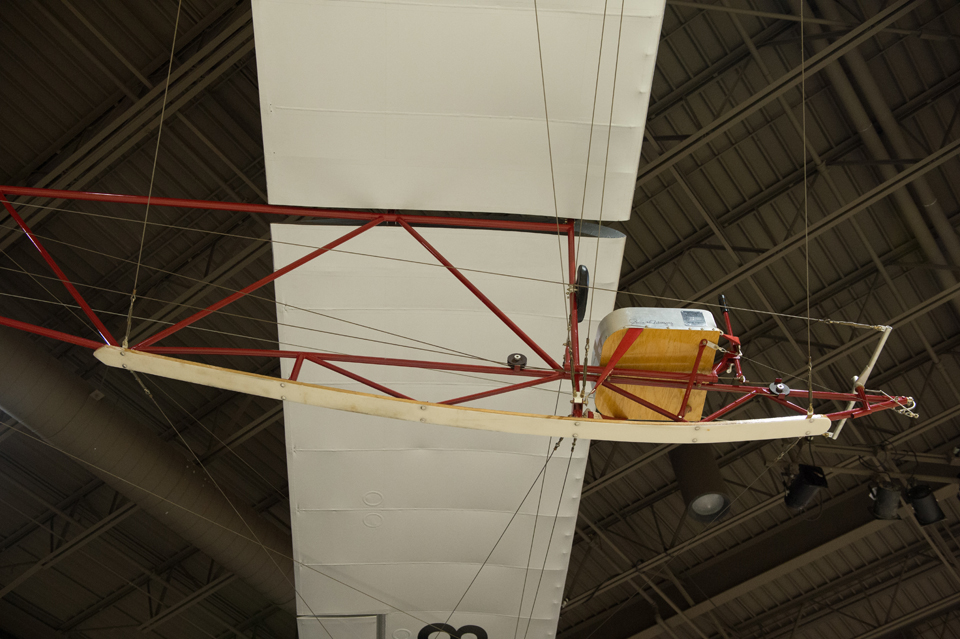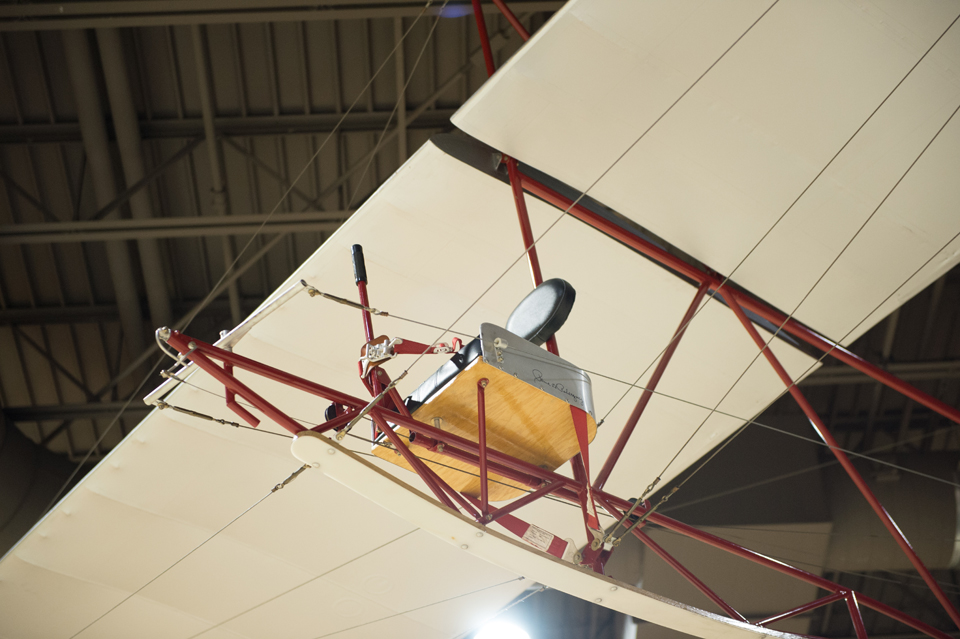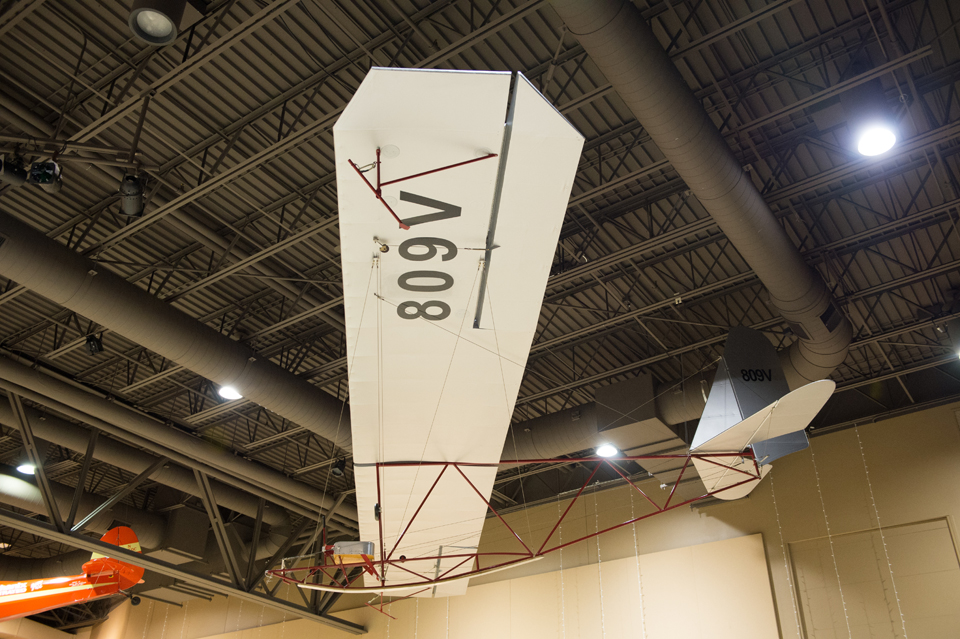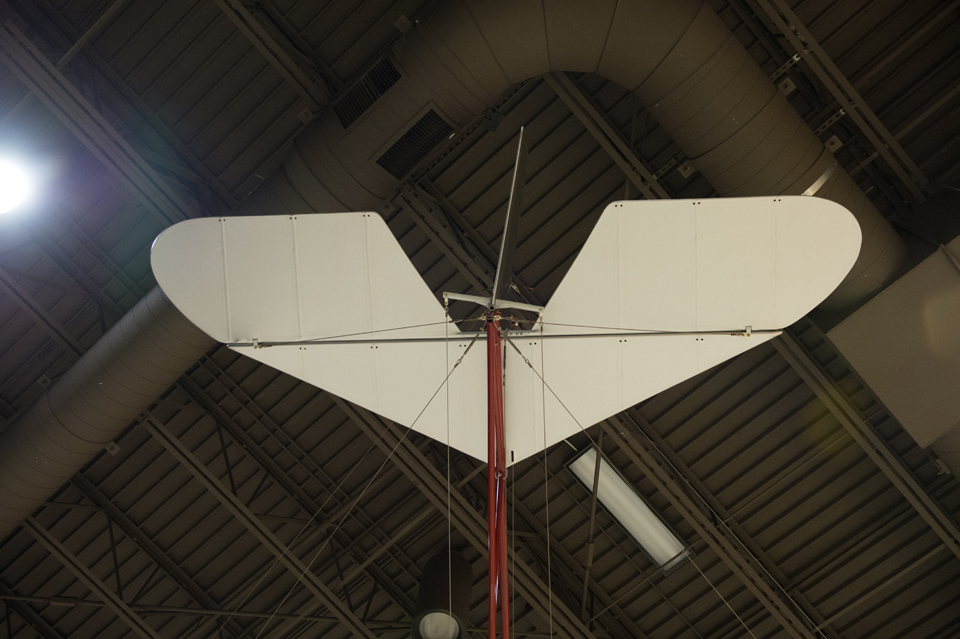Waco Primary Glider Replica
Location: Founders Wing
The Waco Aircraft Company designed and built the Primary Glider in 1930 in an attempt to capitalize on America’s newfound enthusiasm for flight. A high demand for gliders was created by insistent requests from American sportsmen who wanted to “fly like the birds,” and 300 Primary Gliders were manufactured and sold before the fad died out.
The fuselage was constructed of steel tubing and the wings were made of spruce spars and web ribs. The wings were internally braced with hard wire and covered with fabric. The landing gear consisted of a Hickory wood, curved main skid fixed to the bottom of the fuselage and a Waco-designed skid of tube steel fastened by a tripod arrangement to each wing.
Waco sold the Primary Glider complete, but disassembled for shipping purposes. The Primary Glider could be launched by a bungee cord, car, winch, or airplane. Once airborne, the pilot experienced a 14-to-1 glide ratio and could reach speeds near 65 mph. The Primary Glider would land at about 20 mph.
In 2001, Paul Poberezny decided to build a replica of the Waco Primary Glider he owned during his high school days. The original glider was given to 15-year-old Paul by his history teacher, Homer Tangney, as a salvage project. Paul restored the tattered airframe to flying condition in his family’s garage in West Milwaukee, Wisconsin. A friend driving an Essex towed Paul into the air for his first flight.
The replica was built entirely by volunteers. The wings were covered during an EAA Aviation Oshkosh workshop in 2002, and other framework was done the previous year, making the Primary Glider replica a true EAA grassroots project.
On June 17, 2003, Paul test flew the replica, making two short hops over the grass runway of Pioneer Airport. Towed by Paul’s EAA convention VW Bug Red One, the glider rose to about five feet on the first flight before he disengaged the towrope. The second flight went about 10 to 15 feet higher before Paul released the rope and glided safely to the ground. The elasticity of the nylon towrope created too much slack, making it tough to maintain consistent speed and tightness on the line to maintain a smooth flight, but the replica did fly.
Aircraft Make & Model: Waco Primary Glider Replica
Length: 21 feet
Wingspan: 36 feet
Height: 10 feet
Empty Weight: 175 pounds
Seats: 1
Maximum Speed: 65 mph
Glide Ratio: 14-to-1




